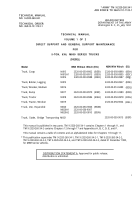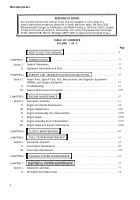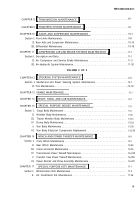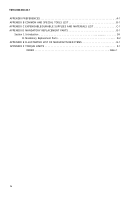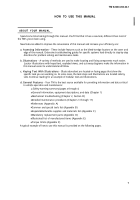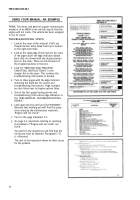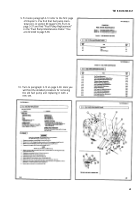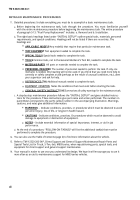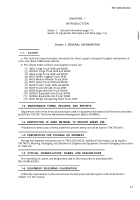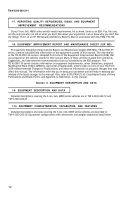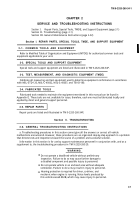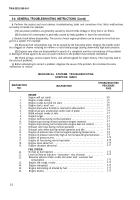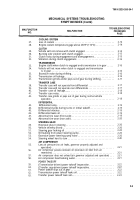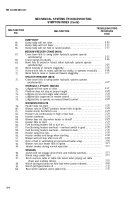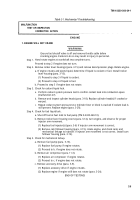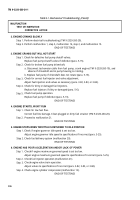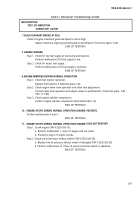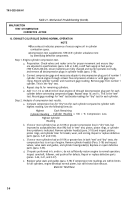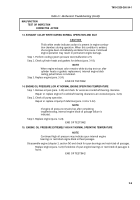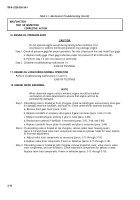TM-9-2320-260-34-1 - Page 15 of 657
TM 9-2320-260-34-1
CHAPTER 2
SERVICE AND TROUBLESHOOTING INSTRUCTIONS
Section I.
Repair Parts, Special Tools, TMDE, and Support Equipment (page 2-1)
Section II. Troubleshooting (page 2-1)
Section III. General Maintenance Instructions (page 2-32)
Section I. REPAIR PARTS, SPECIAL TOOLS, TMDE, AND SUPPORT EQUIPMENT
2-1. COMMON TOOLS AND EQUIPMENT
Refer to Modified Table of Organization and Equipment (MTOE) for authorized common tools and
equipment applicable to your unit.
2-2. SPECIAL TOOLS AND SUPPORT EQUIPMENT
Special tools and support equipment are listed and illustrated in TM 9-2320-260-34P.
2-3. TEST, MEASUREMENT, AND DIAGNOSTIC EQUIPMENT (TMDE)
Calibrate all measuring and test equipment used to determine equipment conformance in accordance
with MIL-STD-120, MIL-C-45662, MIL-L-45607, and TB 43-180.
2-4. FABRICATED TOOLS
Fabricated tools needed to maintain the equipment mentioned in this manual can be found in
Appendix E. These tools are not available for issue; therefore, each one must be fabricated locally and
applied by direct and general support personnel.
2-5. REPAIR PARTS
Repair parts are listed and illustrated in TM 9-2320-260-34P,
Section Il. TROUBLESHOOTING
2-6. GENERAL TROUBLESHOOTING INSTRUCTIONS
a. Troubleshooting procedures in this section cannot give all the answers or correct all vehicle
malfunctions encountered. However, these procedures are an organized step-by-step approach to a problem
that directs tests and inspections toward the source of a problem and successful solution.
Information in this section is for use by support maintenance personnel in conjunction with, and as a
supplement to, the troubleshooting procedures in TM 9-2320-260-20.
WARNIN G
Do not operate a deadlined vehicle without preliminary
inspection. Failure to do so may cause further damage to
a disabled component and possible injury to personnel.
Do not operate vehicle in an enclosed area without adequate
ventilation. Failure to do so may result in injury to personnel.
Hearing protection is required for driver, co-driver, and
mechanic when engine is running. Noise levels produced by
this vehicle exceed 85dB, which may cause injury to personnel.
2-1
Back to Top

